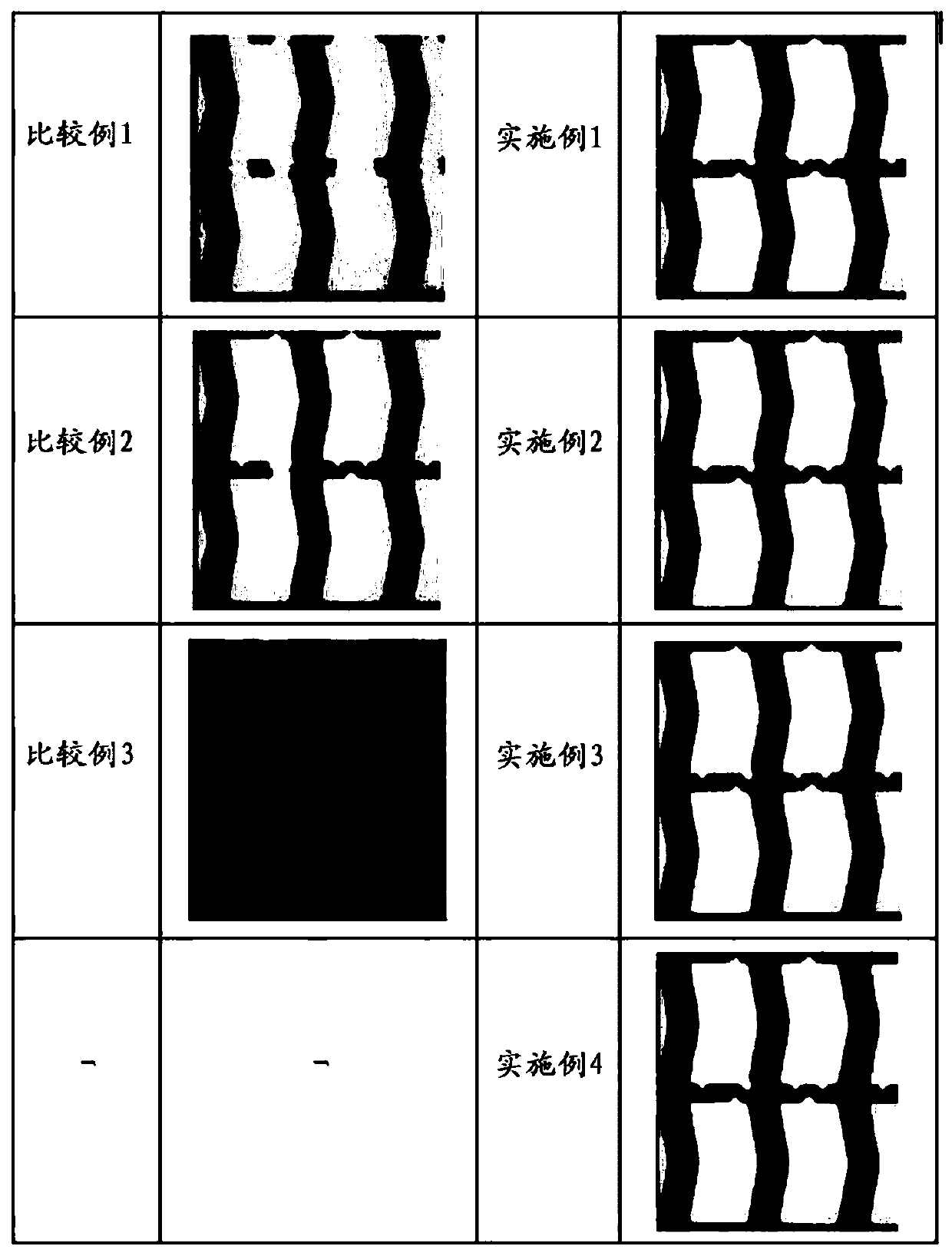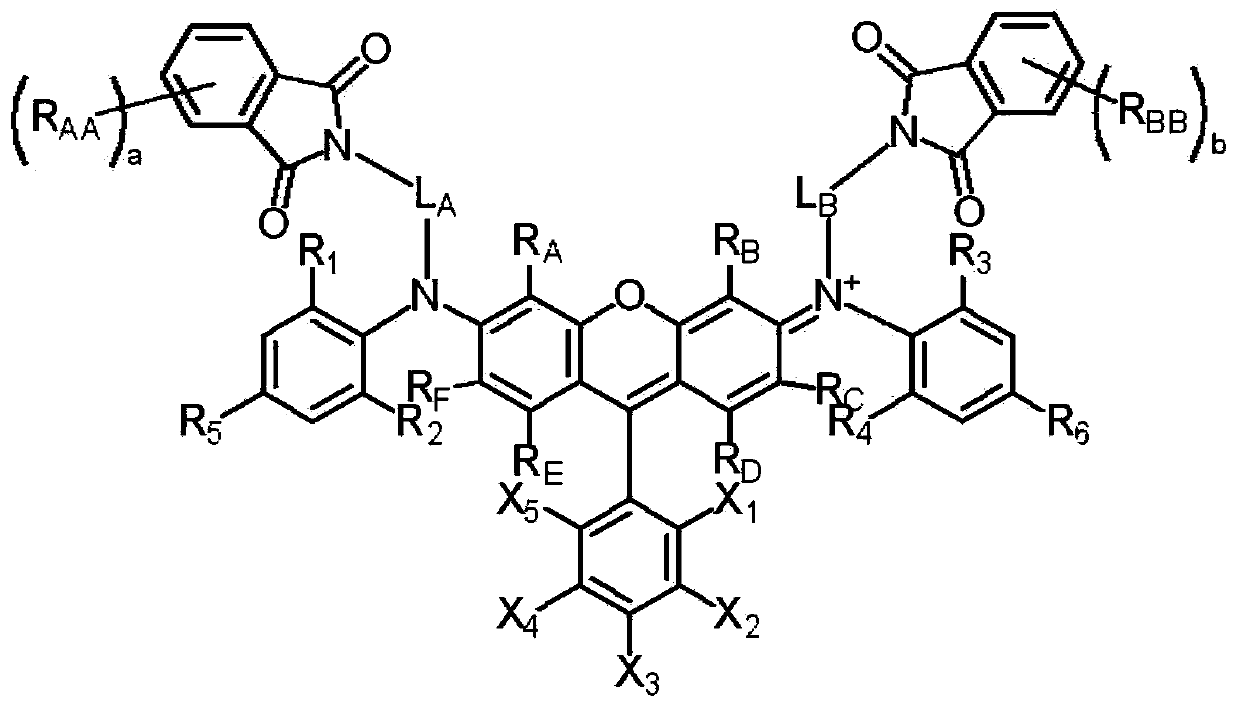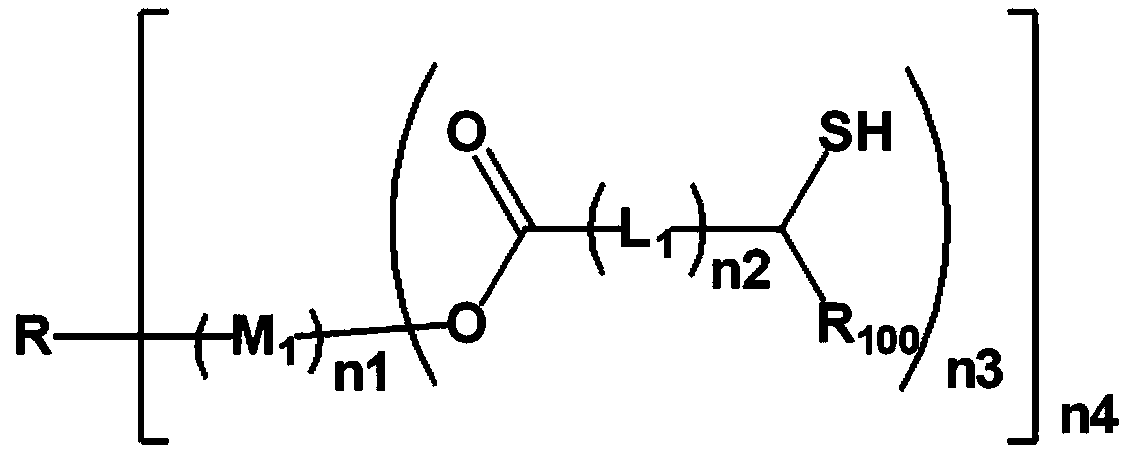Photosensitive resin composition and color filter comprising the photosensitive resin composition
A technology of photosensitive resin and composition, applied in the field of photosensitive resin composition, can solve the problems of color filter color purity, limited brightness and contrast, and limited degree of freedom, etc., to reduce sensitivity, improve brightness, and excellent solvent resistance Effect
- Summary
- Abstract
- Description
- Claims
- Application Information
AI Technical Summary
Problems solved by technology
Method used
Image
Examples
experiment example
[0199] Examples 1 to 4 and Comparative Examples 1 to 3 were produced according to the ratios shown in Table 1 below. The charging unit for each composition is grams (g).
[0200] [Table 1]
[0201]
experiment example 1
[0202] Experimental Example 1. Measurement of Film Reduction
[0203] The above-mentioned photosensitive resin composition was spin-coated on glass (5 cm×5 cm), and prebake was performed at 110° C. for 70 seconds to form a film. Irradiate 30mJ / cm to the whole surface of the substrate 2 exposure. After removing the film layer in the center portion of the substrate, the level difference was confirmed using a surface level difference measuring device.
[0204] Thereafter, the exposed substrate was developed at 0.1 mPa for 55 seconds with a developing solution (KOH, 0.04%), and the level difference was confirmed using a surface level difference measuring device.
[0205] The height difference before and after image development was confirmed, and the degree of film reduction was determined and shown in Table 2 below.
experiment example 2
[0206] Experimental example 2. Evaluation of peeling
[0207] The above-mentioned photosensitive resin composition was spin-coated on glass (5 cm×5 cm), and prebake was performed at 110° C. for 70 seconds to form a film. The distance between the substrate on which the film was formed and the photo-mask was 600 μm, and the entire surface of the substrate was irradiated with 30 mJ / cm 2 exposure. Then, after developing the exposed substrate with a developer (KOH, 0.04%) at 0.2 mPa for 300 seconds, the pattern was observed with an Olympus optical microscope, and the degree of pattern peeling was confirmed. The degree of peeling is shown in the attached figure 1 .
[0208] [Table 2]
[0209] Membrane cut (um) Comparative Example 1 0.038 Comparative Example 2 0.041 Comparative Example 3 0.039 Example 1 0.008 Example 2 0.007 Example 3 0.010 Example 4 0.009
[0210] Table 2 above and appendix figure 1 As shown, it was fou...
PUM
 Login to View More
Login to View More Abstract
Description
Claims
Application Information
 Login to View More
Login to View More - R&D Engineer
- R&D Manager
- IP Professional
- Industry Leading Data Capabilities
- Powerful AI technology
- Patent DNA Extraction
Browse by: Latest US Patents, China's latest patents, Technical Efficacy Thesaurus, Application Domain, Technology Topic, Popular Technical Reports.
© 2024 PatSnap. All rights reserved.Legal|Privacy policy|Modern Slavery Act Transparency Statement|Sitemap|About US| Contact US: help@patsnap.com










